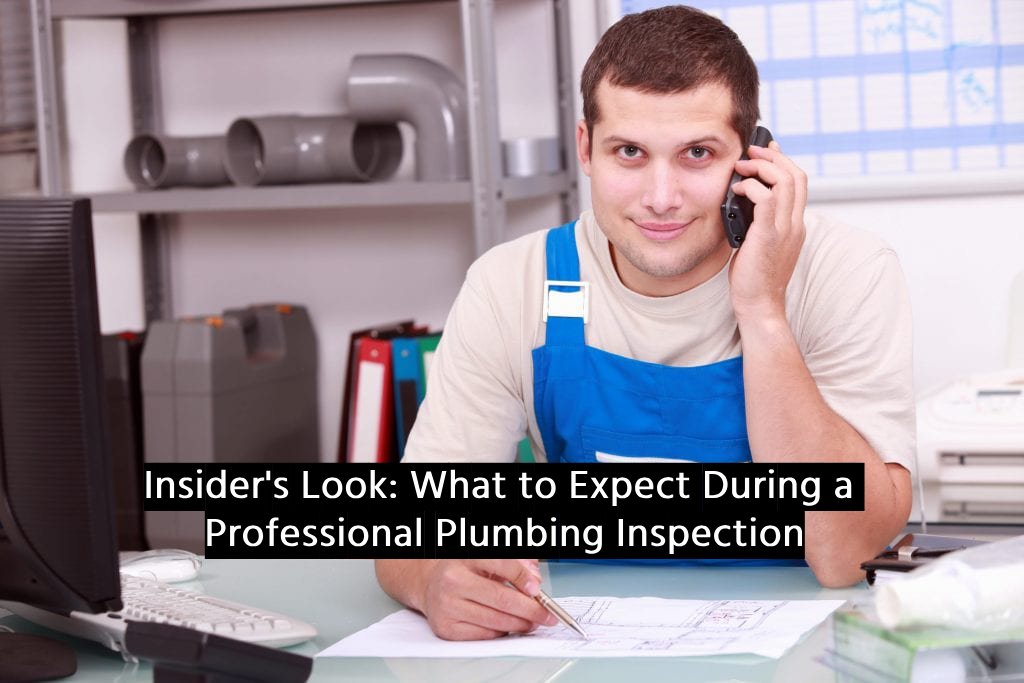Plumbing, the silent sentinel of sanitation in our homes, is often overlooked until a problem arises. Your plumbing system, a complex network intricately woven within the walls, floors, and foundation, plays a crucial role in maintaining a healthy living environment. Regular professional inspections prove to be invaluable in ensuring the seamless operation of this intricate system.
In this detailed exploration, we’ll delve into the world of professional plumbing inspections, shedding light on what these assessments encompass and why they are essential. As we navigate through the labyrinth of pipes and fixtures, we’ll also set expectations for homeowners seeking to understand the inner workings of their plumbing.
Amidst the exploration, we’ll address a pertinent anchor: how leak detection companies can skillfully identify and locate leaks within the plumbing infrastructure. Leak detection is a specialized aspect of plumbing inspections, requiring expertise and advanced technology. Join us as we uncover the methods employed by these companies, demystifying the process of how do leak detection company can find leaks before they escalate into larger, more costly issues. Along the way, we’ll sprinkle in some interesting facts that illuminate the fascinating world of plumbing and the professionals who safeguard our homes through meticulous inspections.
The Deep Dive: A Plumbing Inspection Journey
Conducted by professionals like San Diego-based Plumber Guru, a plumbing inspection starts at the main line—the system’s lifeline. Inspectors, ensuring the correct function of the main valve, look for signs of corrosion and pressure irregularities that may signal leaks or blockages. This meticulous examination is vital for early issue detection, offering homeowners proactive solutions before plumbing emergencies arise. Trusting experts like Plumber Guru ensures a robust and reliable plumbing system, safeguarding homes silently and effectively.
Fun Fact: Did you know the first known plumbing systems were laid in the Indus Valley around 2700 B.C.?
Piping Through the Pathways
An inspector will trace your pipes, examining visible plumbing throughout the house. They look for signs of damage, corrosion, and previous repairs to assess the system’s condition. With specialized tools, they can also inspect inside the pipes to detect any hidden problems like buildup or small leaks.
Fun Fact: The average household’s leaks can account for nearly 10,000 gallons of wasted water annually.
Critical Checkpoints: Drains and Vents
Down the Drain: Drains are next on the checklist. The inspector ensures they’re clear of obstructions and draining quickly. Slow drainage can be a symptom of blockages further in the system, and it’s not just hair and soap causing the clogs; tree roots are notorious for invading sewer lines.
Venting Frustration: Vents are crucial for preventing sewer gases from entering the home and for maintaining proper drainage. Inspectors will ensure these are clear and functioning as intended.
Fun Fact: A plumbing system’s venting network is akin to a tree’s branches, allowing air to balance pressure within the pipes.
The Hot Spot: Water Heater Inspection
Water heaters are a focal point during inspections. Inspectors assess the tank’s condition, the functionality of the temperature and pressure relief valves, the state of the heating element, and signs of sediment build-up, which can significantly reduce efficiency and lifespan.
Fun Fact: The first patent for a water heater was granted in 1889 to Edwin Ruud, and the basic design principles are still used today.
The Finishing Touches: Fixtures and Connections
Faucets, showerheads, and other fixtures are scrutinized for leaks and proper operation. Even small drips can lead to larger issues over time, so ensuring everything is tight and right is key.
Connection Inspection: Connections to appliances like washing machines and dishwashers are checked for leaks and wear. These hoses can become weak over time, leading to sudden and potentially disastrous leaks.
Fun Fact: A faucet leaking at one drip per second can waste more than 3,000 gallons per year—that’s enough water for over 180 showers.
The Seal of Approval
A professional plumbing inspection is an in-depth look at the health of your home’s circulatory system. It provides peace of mind, uncovers hidden issues, and can prevent costly future repairs. While most of us never think about the pipes hidden behind our walls, they work tirelessly to keep our homes clean and comfortable. A professional inspection helps ensure they can continue to do so without interruption. Remember, the most crucial part of home maintenance is what remains unseen, so give your plumbing the attention it deserves and schedule regular inspections.

